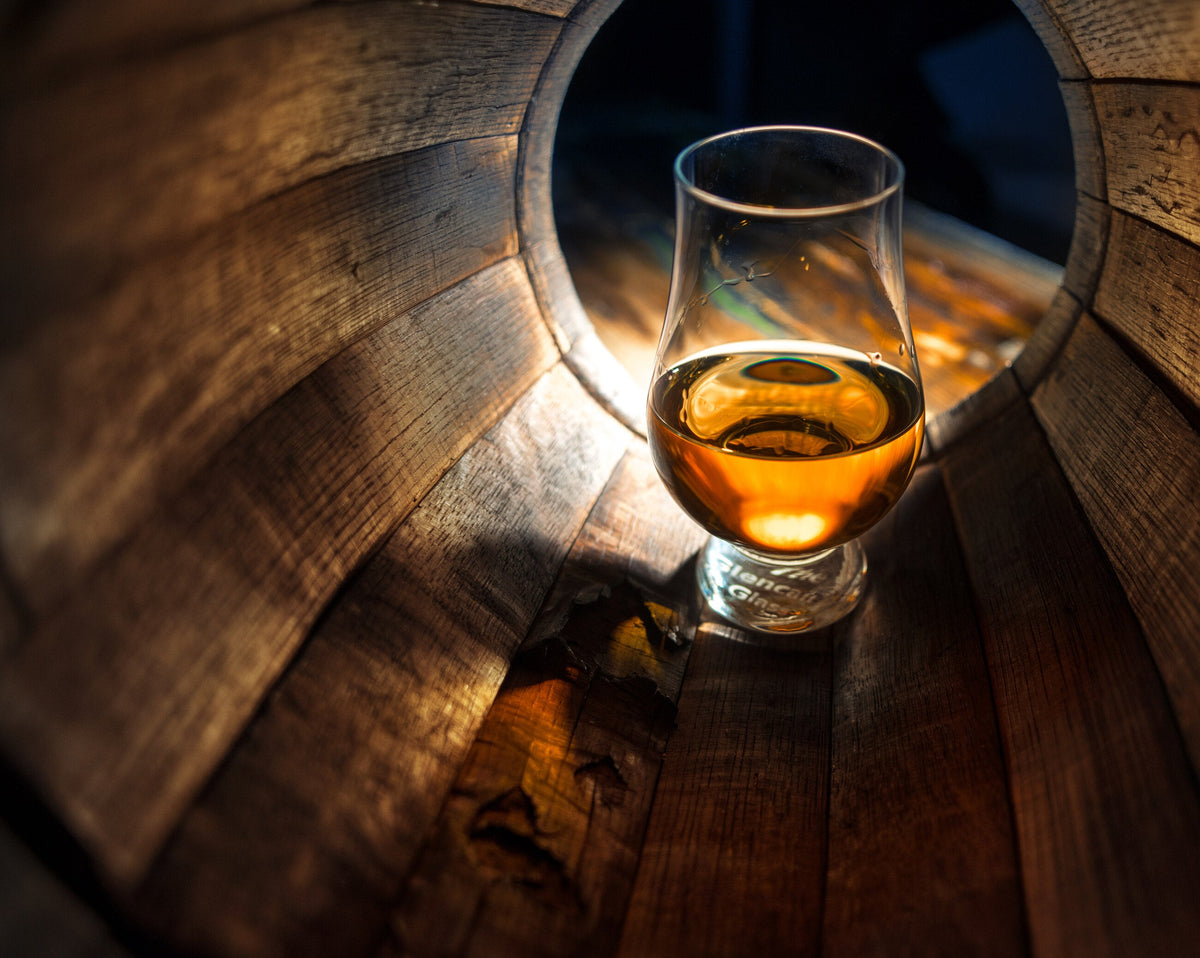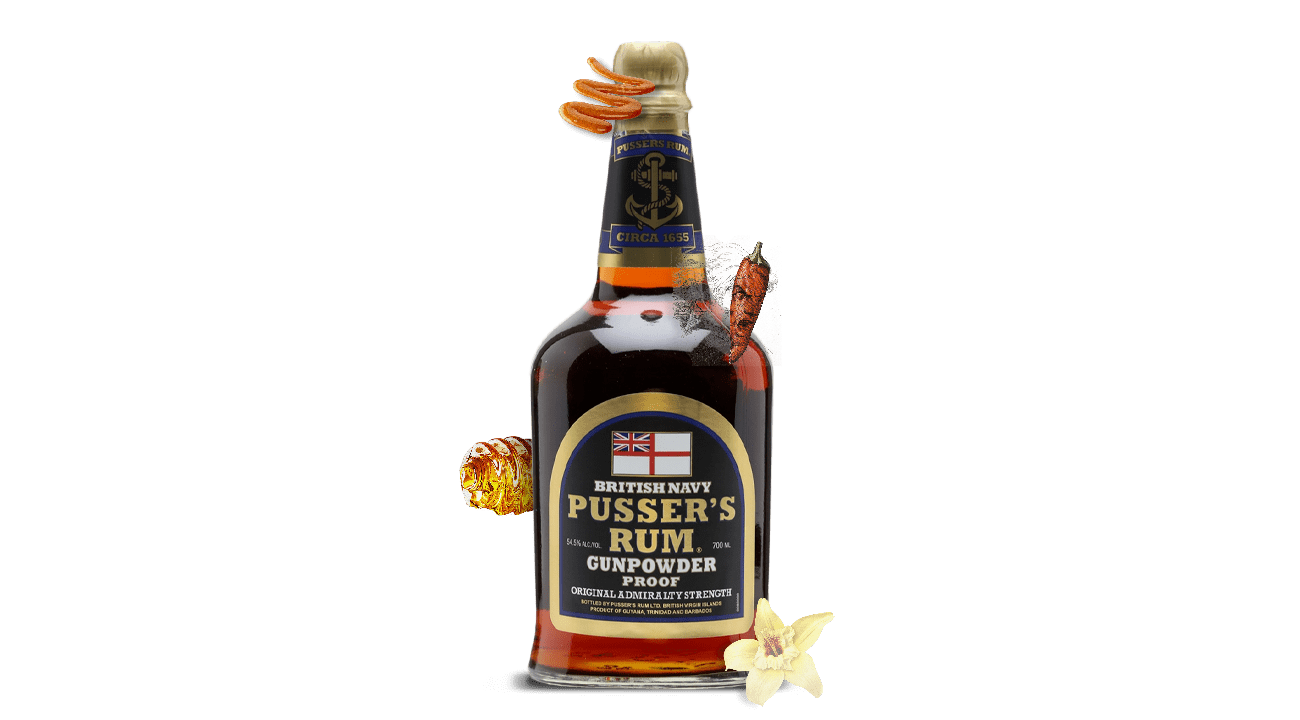
What Is Overproof Rum & What Does Gunpowder Have to Do With It?
|
|
Time to read 5 min

|
|
Time to read 5 min
Overproof rum is not for the faint-hearted. This high-octane spirit packs more than 50% ABV, and you’ve probably heard it called Navy Strength Rum or Gunpowder Proof. But how did it get its fiery reputation? The British Royal Navy, of course!
While overproof rum can tell you how strong it is, it doesn't say much about its flavor. In this guide, we’ll dive into the explosive history of overproof rum and explain why strength doesn’t always mean a better taste.
Overproof rum is any rum that has an alcohol content higher than 50% ABV, usually ranging from 57% ABV to over 75% ABV in some cases. Often dubbed Navy Strength Rum or Gunpowder Proof, this powerhouse spirit has its roots in the British Royal Navy.
Back in the day, sailors tested rum by soaking gunpowder in it and seeing if it would ignite. If it did, the rum passed the “proof” test, and the alcohol content was strong enough for life at sea.
But don’t let the high ABV fool you! Overproof rum isn’t just about strength — it also has a rich history tied to the Navy’s daily rum rations. While it might make you think of intense, fiery flavors, overproof rum doesn’t always guarantee a better taste.
It’s the perfect spirit for cocktails that need a little extra kick, but it’s not always the best choice for sipping straight. So, while overproof rum can give you a thrill with its strength, it’s not necessarily the key to unlocking the best flavor in your glass.
"Proof" is a term that goes way back to the days of sailors and gunpowder. It’s a way of measuring the strength of alcohol, specifically the percentage of pure alcohol in a drink. In simple terms, "proof" refers to how much alcohol is in a spirit.
In the U.S., the proof is double the alcohol by volume (ABV). So, if a rum is 50% ABV, it’s 100 proof. The higher the proof, the stronger the alcohol.
Now that you know what “proof” means, overproof rum is easy to understand. It’s just rum with a higher proof than the usual 40% ABV–stronger, more intense, and ready to bring the heat!
The Royal Navy didn’t just safeguard the seas, they also played a huge role in shaping the world of rum. Back in the 1600s, when sailors were out on long voyages, they needed something that could survive the rough conditions of ship life.
Rum was the perfect choice, but how did they make sure it was strong enough to keep up with their tough life at sea?
Enter the genius (and explosive) solution: gunpowder. Back in the day, they didn’t need fancy tools–just some black powder and a match. Sailors (and the ship's Purser, or “Pusser” as they liked to call him) would mix a bit of rum with gunpowder and try to light it.
If it caught fire, the rum was strong enough. If it didn’t? Someone was probably getting ripped off. And nobody, especially not a salty sailor, wanted to be short-changed on their daily ration.
This simple, replicable test meant both the Pusser and the crew could check if the rum was the real deal.
That little fire test became the basis for “100 English Proof,” the magical threshold at which gunpowder would still ignite, later calculated to be exactly 57.15% ABV. For a long time, this was the standard. Eventually, the Royal Navy wanted something a bit more precise than “does it explode or not?”
In 1816, Bartholomew Sikes stepped in with a more scientific approach: the alcoholmeter. This tool measured alcohol content by specific gravity, and with a little math magic, it confirmed that 4/7ths of pure alcohol by volume equaled 100 proof.
The link between proof and rum became so iconic that the phrase “Navy Strength” was coined to describe rum that met this requirement. The next time you raise a glass of overproof rum, you're not just toasting to high alcohol content, you’re sipping on a piece of naval history!
After adopting the Sikes alcoholmeter in 1816, the Royal Navy decided to double-check everything with a bit of old-fashioned fieldwork. They tested 100 samples of rum using the trusty gunpowder method, crunched the numbers, and landed on 54.5% ABV as the sweet spot.
This became the official “Admiralty Strength.” Strong enough to meet naval standards, but a little more refined than lighting booze on fire.
The English Proof system stuck around until 1980, which is surprisingly recent considering most of us have moved on to ABV, Celsius, and other sensible metrics.
Today, we measure alcohol content by how many milliliters of pure ethanol are in 100 mL of liquid at 20 °C. Not quite as dramatic as setting rum ablaze, but way more accurate.
Oh, and in case you’re wondering—the American system is different. U.S. Proof is just double the ABV, which is why you’ll see Pusser’s Rum’s British Navy Gunpowder Proof labeled as 109 Proof (aka 54.5% ABV).
Note that the tradition of rum rations in the British Navy continued for centuries, but it officially ended on July 31st, 1970, forever known as Black Tot Day. This marked the last time sailors received their daily rum ration, a practice that had been a staple in naval life since the 17th century.
Just because a rum is overproof doesn’t mean it’ll taste like rocket fuel, though, to be fair, some do. The “overproof” label only tells you one thing: the alcohol content is higher than usual. That’s it. It doesn’t tell you if it’s funky like a Jamaican Pot Still Rum, grassy like an Agricole, or sweet and caramel-heavy like a molasses-based blend.
You could be sipping an overproof white rum that’s sharp, grassy, and unaged, or a dark rum that’s rich, smoky, and full of molasses notes. There’s also spiced rum, loaded with vanilla, cinnamon, or other flavorings.
The flavor depends on how it’s made, what it’s made from, how it’s distilled, and how long (if at all) it ages.
So, while overproof rums may share a fire-breathing reputation, their taste profiles are all over the map. Proof tells you how strong it is, not what kind of experience you’re about to have. That’s where the real adventure begins.
Now that you’ve got the full picture, overproof rum probably feels a lot less mysterious. You know it’s all about alcohol strength (anything above 50% ABV counts) and that it has roots in the British Royal Navy, where sailors literally set their rum on fire to make sure no one watered it down. Pretty dramatic, but it worked.
These days, we have much more accurate tools (thanks, alcoholmeters!), but the name stuck, and so did the love for bold, high-proof rums. But as you’ve also seen, the proof number doesn’t tell you everything. Overproof rum can be white, dark, or spiced, and each one has a completely different flavor profile.
If you’re into spirits, there are plenty of other alcohol-related terms most people don’t know about. We’ve compiled a list of 50 terms every spirit aficionado should know, perfect for expanding your knowledge and impressing your friends!
Lastly, Flaviar offers amazing Rum-themed subscription boxes including rare and high-end brands – perfect for lovers of the sugar cane Spirit. Moreover, If you're looking for budget-friendly options browse our best rums under $50. Cheers!

